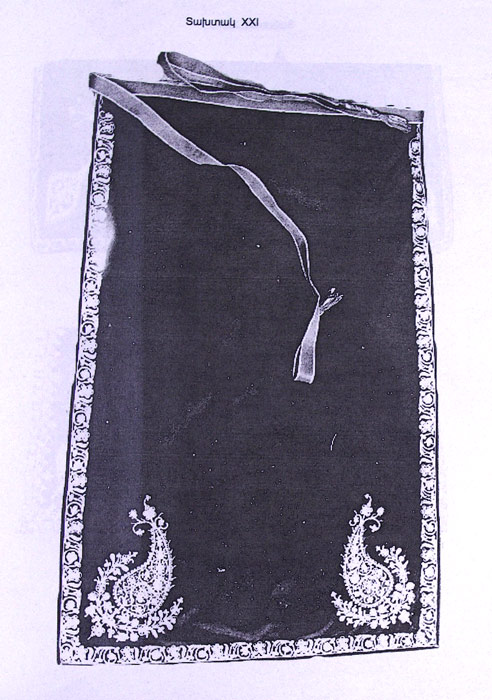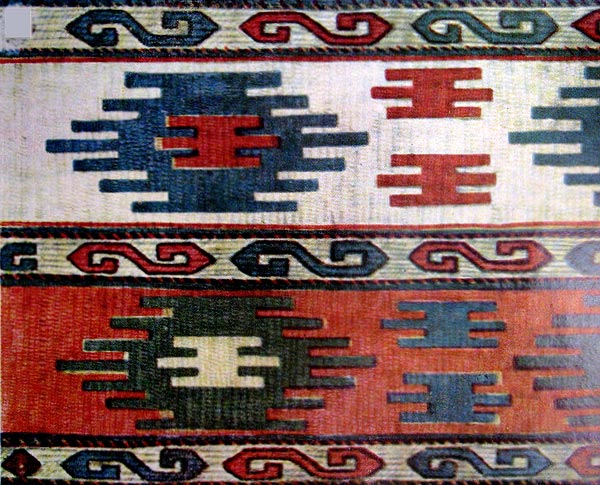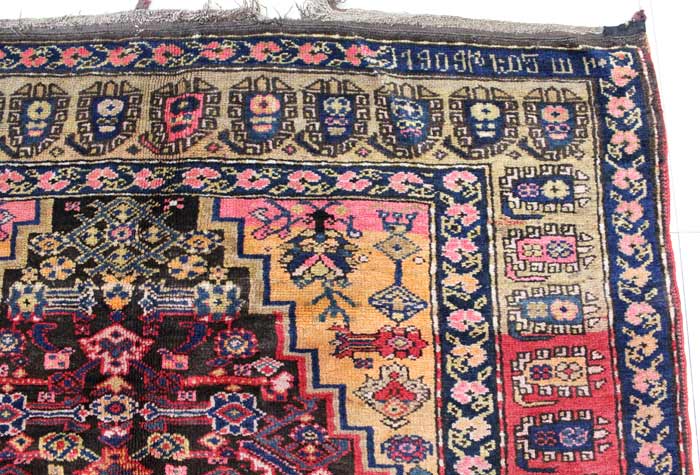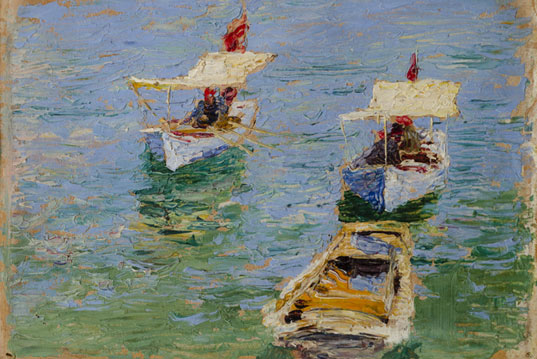During the time clothes have changed a lot, but there are somesimilar attributes, which are unchangeable. Even foreign lent, Armenians were creative about colors, structure and harmony. The chosen colorsand ornaments are unique of thenational costume. Armenian carpets also have these two attributes.nationalcostume consists of some parts, which complete each other and connect each other by ornaments. The ornaments of the different parts of national costume’s we can see in the ornaments of the Armenian carpets, which specifies about these two cultural similarities of the semantics.
To referring to the separated parts of the national costume’s, it is possible to see those similarities and connection. Thus, the embroidered parts of women and men’s gowns have protective meaning.Embroidered outlines the lateral opening flanges and fringes of the collar, the part of breast and hands. Men’s gowns have ornamentsboth in the flange of the collar and the part of breast, which symbolized for saving heart and courage.
The additive ornamentedpart of women’s breast was called ”dosh ” or ”srtanots”, which meant to save the breast. The fringes of the brides’gown were also embroidered, symbolizing the protection of the evil and providing fertilization. The wedding dress was more decorated. The needle work was made of silver and gold threads. Mainly the ornaments had a floral decoration.
One of the major parts of the national costume is apron. The richest ornaments have the aprons of Van, Vaspоurakan, Great Hayq, Artsakh, Zangezоur. Nowadays, the Van- Vaspоurakan’s aprons are exhibited in the History Museum of Yerevan, which have been made of the technique of ”teltogh”(arm. Take thread,thenleave it). Through this technique many big bags, salt bags and double bags have been made. This similarity isn’t amazing, because big bags have a direct connectionwith wedding ceremony. There were used for carrying girl’s dowry.
The belt is typical for women’s and men’s national costume. There are many Armenian types of belts: such as textile, leather and metal. In the historical regions of Tоurоuberan, Vaspоurakan and Great Hayq textile belt ornaments were like a line ornament or large lattice, wide and long lines.People tie up these belts on their back and used likea pocket for putting in the pouch of tobacco(qisan), pipe, gun(chakhmakh) and so on. The other type of textile belt was typical in the women’s national costume of Great Hayq. It is about silk thin belts which had two side ornamentsand sometimes they were both dated and cited.
As it is already mentioned, many familiar ornaments are similar to carpets and national costume setups. Most famous and celebrated ornament is the symbol of cross, which has a very old history. This symbol is coincided by many nations. One group of researchersdefinesit like a symbol of sun.The idea of four elements( the four powers of nature)is typical in Christianity. Besides cross basic ornaments, there are many ornaments in carpets and in the national costume which reminds Armenian ‘’T” letter.(about ‘’S”).
VardanTemоurchyan, whostudied Armenian carpets in depth, classified this ornament inthe dragon symbols, which originated by the correction of the formed dragon symbol. The worship of dragon is closely connected withwater worship.
Other researchers see similarities with snake worship. According to Harutyun Qyоurtyan, who has many articles about Dragon carpets, thought that it was wrong to identify the dragon and the snake, because the worship of dragon differs from that of snake.
In spite of these two contradictory notions, we can meet these figures in the Armenian art by many forms, which symbolize the concept of fertilization, abundance.
The other widespread symbol of the National Costumeis a figure of almonds or bud, which isthe most widespread form of fertilization both in the National Costume and in the carpet.Those carpets, kilims, embroidered outlines of clothes, made for dowry, had many ornaments symbolizing this seed.
 Important and famous another ornament is the tree of life. We meet the most attributed patterns in the Armenian decoration art.
Important and famous another ornament is the tree of life. We meet the most attributed patterns in the Armenian decoration art.
The primary fragment of the silk belt is life tree. Sometimes it is formed like a composition of vase, which also meansfertilization, the idea of growth.
In thenotions of the ancient world, tree personalized the woman, e.g. white birch symbolized Slovak woman, in theArmenian notion willowsymbolized. The willow is the basic item of Palm Sunday. In the carpet ornaments life tree is the basic item. This symbol is seen both in the background of carpets and in the borders.
The apron of Van-Vaspourakan contains the whole band of ornaments. Crosses, hexagons, stars, bird figures, hooks and the hexagon stars.These all ornaments are decorated carpets.
Thus, the carpet and the National Costume form an irreplaceable part of the Armenian applied art, but they also have a ritual meaning. There is an entity of ornaments in these two national things, which are similar and mean to keep traditions and to transfer important ideasto new generations.











![[prologue]The underground activities of Armenian modern music. New series of “Arvestagir” magazine](http://arvestagir.am/wp-content/uploads/2017/01/prologue-The-underground-activities-of-Armenian-modern-music-new-series.jpg)

Нина Гальфингер
Уважаемая Астгик!
В Вашей статье приведена иллюстрация серии рисунков “дерево в вазе”. Она мня очень интересует, так как на музейном предмете – ноже – аналогичное изображение. Не могли бы Вы сообщить мне максимум информации – источник иллюстрации, что изображено на иллюстрации – это не пояса?, а также как автор называет элементы этих рисунков – “дерево”, “ваза” или иначе.Заранее спасибо!